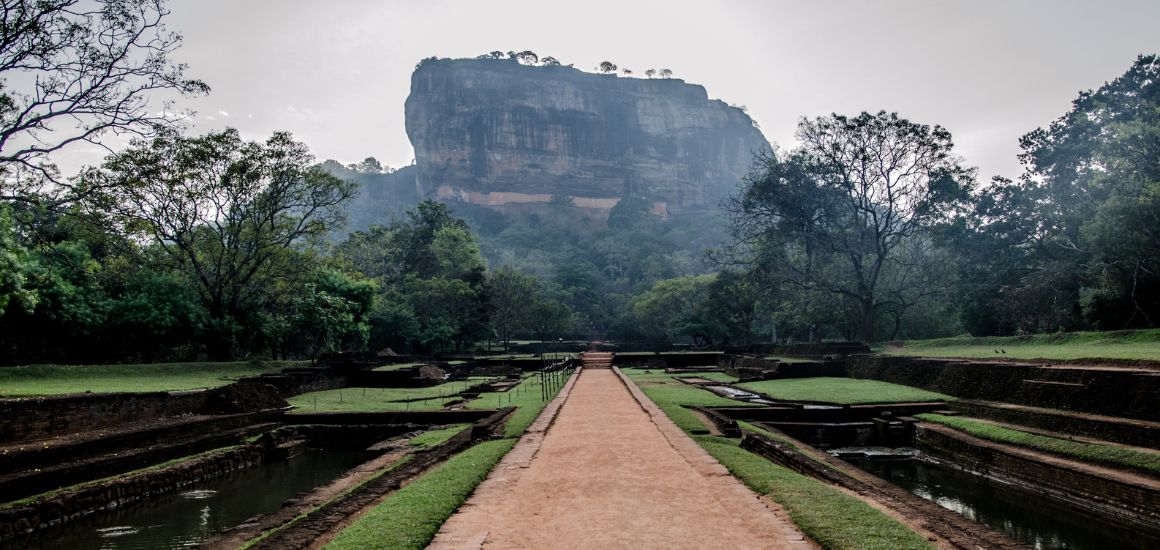History of Sigiriya Revealed!

You meet Sigiriya rock on your way to the road from Colombo to Kurunegala-Dambulla. Turn from Inamaluwa junction and travel 10 kilometers ahead. The name “Sigiriya” sounds strange, right? But, can you believe that this name has great meaning? Yeah, this fortress indicates the shape of a lion. Simply. This is a rock castle with an unbelievable architectural design. Thanks to King Kashyapa, the History of Sigiriya spread worldwide.
History of Sigiriya
Sigiriya rock is a world heritage site with walls, moats, gardens, water parks, and a great art gallery. The height of this rock fortress is about 180 meters.
Guess what this amazing rock is famous around the world for?
There are so many stories about the history of this mind-numbing ancient rock fortress, even before King Kashyapa came to rule it.
Ancient History
According to archaeological evidence, the history of Sigiriya Sri Lanka goes much further back. Rumors say King Ravana had also built a palace in Sigiriya.
Can you believe that the inscriptions found say that Sigiriya was an Aryan settlement even in the 2nd century A.D.?
In excavations around Sigiriya, they found remains of a very advanced iron technology used in the past.
The legendary coup that led to the creation of a world heritage
Kashyapa was the son of King Dhathusena. But he did not have royal blood. King’s nephew and army commander Migara led a coup to overthrow the King. He joined Kashyapa along. The legitimate successor to the heir, Moggallana, escaped to South India out of fear for his life. Since ancient times Anuradhapura regarded the kingdom as the country’s traditional capital. After becoming the King, Kashyapa changed it to Sigiriya. He feared that Moggallana, the royal heir by blood, would come to a war with him in the future.
The war for the throne
After 18 years, Moggallana gathered forces and came to war with Kashyapa. But King Kashyapa had created this unbelievable place when Moggallana reached Sri Lanka. How he made it with all the architectural designs is still a mystery.
Then how Moggallana defeated him?
Did he not have enough force?
Did he not have enough weapons?
He had them all. Yet, his fate turned against him. When he was at war, he could not cross a mud pit. So he had to turn his elephant back. The army thought that the King was trying to flee. They left the King alone. Having no option left, Kashyapa slit his own throat and died.
After the death of Kasyapa, the Moggallana took over the kingdom. He held a funeral ceremony for his brother befitting a king and cremated him. You can find the stone near the Pidurangala temple. Later, Moggallana handed over Sigiriya to the monks and returned to Anuradhapura.
Ancient buildings and water gardens
You would not believe the technology they used in that era.
Can you believe there is a high symmetry in the Sigiriya Water garden?
And do you know its drainage system designs amaze modern engineers?
The Jala mal system is still working when it rains. In a Sigiriya essay, you can write countless details about the fantastic buildings and the ancient water garden.
Sigiriya Frescoes
This rock fortress is famous for its murals.
Do you know what scholars’ opinions about them are?
They say that it contains the finest paintings of Sri Lanka. There are currently 19 female figures in gold and blue. First Archaeological Commissioner H. C. P. Bell says that the women in gold are harem women and the blue ones are maidservants. He has also said that these women will worship Pidurangala with flowers.
Sigiriya mirror wall
Can you believe that the whole world has only one place, like the mirror wall? People recorded many poems and songs on the mirror wall. Can you guess how many songs are recorded on the walls? There are about 700 recognizable songs. These scribbles show the past language, their taste, and how the Sinhala language gradually spread.
Excavations in Sigiriya village
Major H. Forbes rediscovered Sigiriya rock in 1831. Sigiriya jungles covered it from people’s eyes until then. Again in 1833, Forbes went to Sigiriya’s Mirror Wall but could not climb the rock. A.Y.Adams and J.Bailey, the two young civil servants, first climbed there in 1853. In 1894, H.C.P. Bell cleared Sigiriya jungles and started archaeological explorations there.
They carried out excavations at the west gate of this rock. There they raised many parts of the ancient water garden at that time. They did not carry out excavations on the eastern side of the entrance. When the Mughals came to war in the Sigiriya village, they must have been creating cities in the east.
Do you know what the archaeologists say about these constructions?
They say that the ones who designed that area wanted to bring large vehicles close to the rock. Archaeologists also say that those vehicles could be elephant carts.
Special Visitors of Sigiriya
Can you guess how many world leaders came to visit Sigiriya Sri Lanka?
Queen Elizabeth II arrived In 1954. Ayub Khan, Second President of Pakistan, Marshal Tito, President of Yugoslavia, and Sangharaja Thera of Burma were some world leaders who came to see Sigiriya.
Conclusion
Sigiriya is an amazing creation of the ancient Sri Lankans. It is a colossal creation. It also represents the uniqueness of Sri Lankan culture. The history of Sigiriya shows the genius creativity of the proud nation to the whole world.
This kingdom became a sophisticated city and stronghold under King Kashyapa. This era is home to most of the complex buildings of the Sigiriya rock. Surroundings, including palaces, gardens, and defensive structures, are atop the rock summit. Book one of the Sigiriya hotels to enjoy this magnificent ancient piece of history.